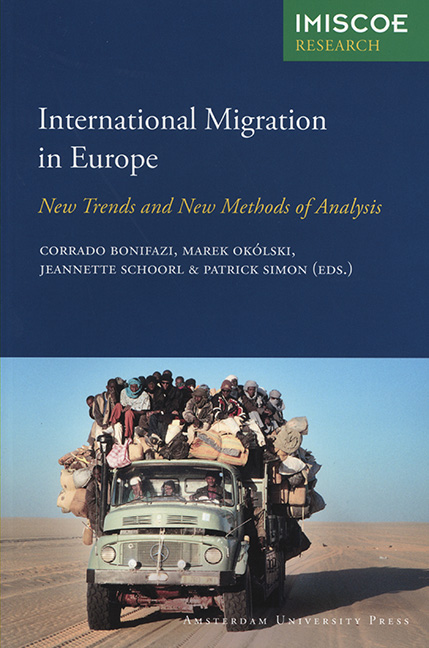Book contents
- Frontmatter
- Contents
- Preface
- 1 Introduction
- PART I NEW FORMS OF MIGRATION IN EUROPE
- PART II EVOLUTION OF REGIONAL PATTERNS OF INTERNATIONAL MIGRATION IN EUROPE
- PART III MEASURING INTEGRATION: IMMIGRANTS AND THE SECOND GENERATION
- PART IV SPECIAL SURVEYS IN INTERNATIONAL MIGRATION STUDIES
- List of Contributors
- Index
- Other IMISCOE Titles
3 - On the Demand Side of International Labour Mobility: The Structure of the German Labour Market as A Causal Factor of Seasonal Polish Migration
Published online by Cambridge University Press: 22 June 2021
- Frontmatter
- Contents
- Preface
- 1 Introduction
- PART I NEW FORMS OF MIGRATION IN EUROPE
- PART II EVOLUTION OF REGIONAL PATTERNS OF INTERNATIONAL MIGRATION IN EUROPE
- PART III MEASURING INTEGRATION: IMMIGRANTS AND THE SECOND GENERATION
- PART IV SPECIAL SURVEYS IN INTERNATIONAL MIGRATION STUDIES
- List of Contributors
- Index
- Other IMISCOE Titles
Summary
Introduction
Since the adoption of a bilateral agreement signed by the Polish and German governments in 1990, Polish workers have been allowed to take up seasonal employment (short-term and legal) in specific sectors of the German economy. According to the agreement's provisions, the seasonal workers from Poland can undertake working activities in Germany for a period of three months. This relatively new form of migration has constituted a large part of Polish migration in the last couple of years: since the year 2000, over 250,000 workers have taken seasonal employment in Germany annually.
The agreement was generated by mutual will to minimise the negative effects of the economic and political transition in Poland in the 1990s, and to control and restrict East-West labour movements to Germany which were expected to increase rapidly because of the opening up of Eastern Europe and the high differences in income and living standards between East and West. These arguments were presented on both sides, but it is clear that the need for low-skilled labour in several sectors of the German economy was the main force driving Germany to open selective paths to its labour market to Polish workers, but also, in limited numbers, to skilled workers or trainees, especially in the construction sector. In addition, the agreement with the Polish government provided for the legalisation of illegal employment, so prevalent in the previous decade.
It is the aim of this chapter to analyse the demand-side causes of (seasonal) labour migration in the context of the German labour market – the most important receiving labour market for Polish migrants since the 1990s (at least prior to the EU enlargement in 2004). The study is based on two unique empirical data sets: on a quantitative survey with Polish seasonal workers and on a qualitative interview study with German employers of Polish seasonal migrants. The authors argue that the recruitment process initiated in the early 1950s influenced the structure of the German labour market in a very substantial way, leading to labour market segmentation in certain sectors. The hypothesis of labour market homogeneity/heterogeneity will be examined with reference to the dual labour market theory. The participation, position and mobility of foreign labour in the German economy will be emphasised.
- Type
- Chapter
- Information
- International Migration in EuropeNew Trends and New Methods of Analysis, pp. 37 - 64Publisher: Amsterdam University PressPrint publication year: 2008
- 3
- Cited by



